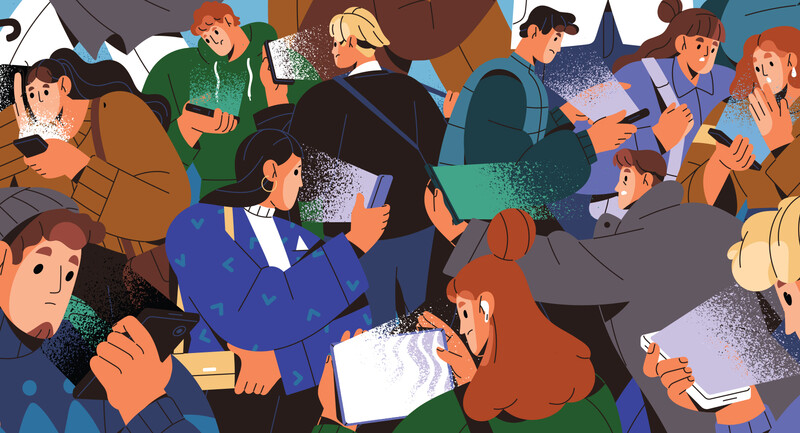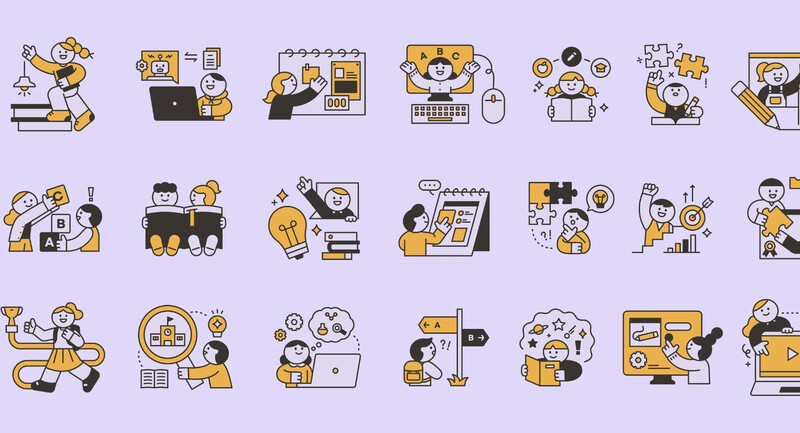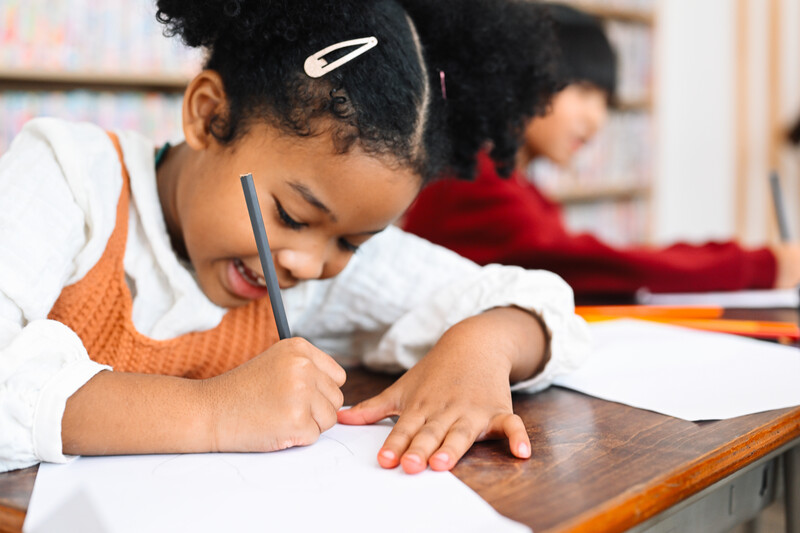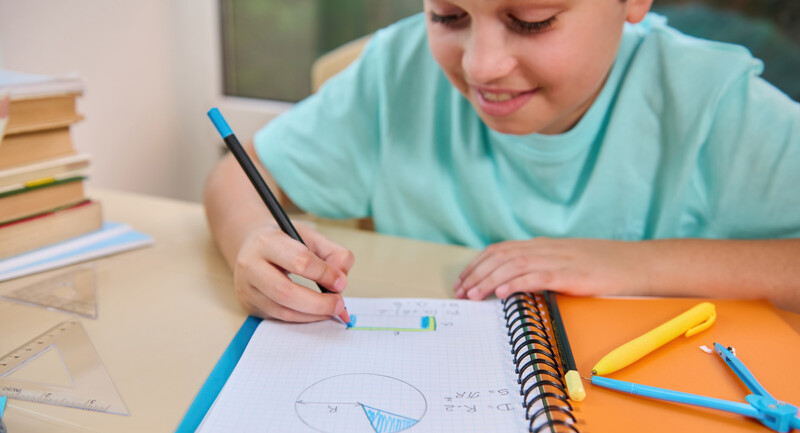As those of us who have been teaching for a while know, even the best curriculums and most dynamic teaching don't affect all students equally. When it was fashionable to track students by ability, we thought we were reaching our students. But then, reaching meant different things. For "gifted" students, it meant providing enriching information; for those who were slower, it meant diluting content.
Having read the research and heard the rhetoric on learning styles and competencies, many educators now are convinced that all students can learn what we want them to know. The empirical studies indicate that students simply learn in different ways. This is the crux of Howard Gardner's theory of multiple intelligences.
Discovering New Strengths
Gardner's theory is that we all have different natural or innate intellectual strengths or "intelligences." We learn best when these strengths are brought into play during the learning process. In 1983, Gardner identified seven intelligences: linguistic, logical-mathematical, spatial, bodily-kinesthetic, interpersonal, intrapersonal, and musical.
Traditionally, education has been directed at linguistic and logical-mathematical intelligences. Few of us were exposed to alternative teaching methods when we were students, so it's no wonder we are more comfortable using the linguistic and logical strategies that were practiced on us. But those of us who recognize that some of our students are more spatially talented than others, some more logical, and so on, sense that modifying teaching and learning methods to address multiple intelligences may well improve our results.
I must confess that when I began using this approach I asked myself how I would ever get through the curriculum doing all this additional work—I hardly had time as it was. I wondered, too, how I could adjust every concept to address all seven intelligences; some simply don't apply. And even if I could, would the results in student learning justify the extra time and effort?
Still, I went ahead and planned, taught, and assessed my students using Howard Gardner and two other advocates of multiple intelligences—David Lazear (1991) and Thomas Armstrong (1994)—as guides.
Example 1: Inventions and Innovations
Here is an example of how I have enlisted multiple intelligences at New Hope-Solebury High School in New Hope, Pennsylvania. In my sophomore World Cultures course, we were looking at the differences among inventions (creation of a new concept or product), innovations (new uses or modifications of an invention), and diffusions (combinations of existing inventions to meet new needs or situations). I wanted my students to understand that circumstantial conditions, prior knowledge, creativity, and communication were all important contributors to these processes.
We defined the terms (linguistic) and related them to everyday artifacts or situations (logical). Students then worked in small groups (interpersonal) to devise an appropriate graphic presentation of the three terms (spatial). Next, I gave the students the following assignment to complete in class: Using pennies, three-by-five cards, tape, paper clips, and colored markers, make something that you can complete in a half hour. You may use as many or as few supplies as you need, but your object must include all five. You may work independently or you may go around the room and scout out what others are doing. But you must turn in a product at the end of the half hour and be able to determine whether you were an inventor, an innovator, or a diffuser (intrapersonal).
While they worked, I played a tape with an eclectic mix of selections from the Grateful Dead, Kitaro, the Cowboy Junkies, and Bach (passive musical). Interestingly, some students seemed to pace themselves to the music the whole time, while others were attentive only to the first track and then became totally engrossed in their work.
Once the students completed their constructions, the class voted on whether each was an invention, an innovation, or a diffusion. In a brief closure exercise, students wrote opinions about which of the three processes takes the most intelligence (logical). In previous years, I had used two class periods in the same way, but without the hands-on project and subsequent presentation and voting. As I read the journal responses, they seemed infinitely wiser than those written before I introduced multiple intelligence approaches.
Inventorying and Assessing
To evaluate my work, I have developed a form I call the Multiple Intelligences Inventory (fig. 1) [figure currently unavailable]. I try to fill it in as I develop each unit. In this way, I can quickly plot the status of my lessons and assignments, knowing if I've neglected an intelligence. I can also record what I think are the strengths and weaknesses of my instruction and assessment.
After completing each lesson, I fill in the appropriate areas. I tally the total number of students using each intelligence and record some brief observations in the "comments" section. The statistical and anecdotal information helps me evaluate an entire unit instead of single assignments. By graphing the work students have done over the year, I have a visual, anecdotal, and logical perspective of where I made pedagogical inroads and where I need improvement.
After a year or so of teaching to multiple intelligences, I developed a similar checklist to assess each student. Although I don't fill out a form for each student for every assignment, I do try to complete an inventory for each student at least once a quarter.
This information helps students see how they are doing and gives them some personal insights. The form can also be an effective diagnostic instrument in team meetings, parent conferences, and discussions with individual students. In addition, the form can be a wonderful way to find the uniqueness of students who don't have Individualized Education Program (IEP) documents. And for those special students who do, this can be a good way to evaluate how well the school is meeting their needs.
Example 2: Ensuring Changes
After a lesson in my 10th-12th grade Law and Justice class, I found that the presentation and assessment addressed all but musical intelligence. Not bad!
The topic was the different kinds of personal insurance—life, fire, health, auto, and so on. I gave students an overview of the subject in a block and a half of time (87 minutes the first day, 42 on the second). The day before we began, I gave each student a description of one type of insurance. The next day, students read and underlined key points in their descriptions (linguistic).
Then, working in assigned groups (interpersonal), they discussed, designed, and constructed a 36-by-60-inch graphic map (spatial, bodily-kinesthetic) for a five-minute group presentation the next day. Each member was to speak (linguistic). They checked statistics with local insurers and used classroom magazines, newspapers, and computers to make their graphic presentations accurate (logical-mathematical) and aesthetically attractive.
On the second day, the students gave their presentations and wrote in their journals. They then ranked the five types of insurance according to which ones were most meaningful to them that day (intrapersonal). They then reranked them according to how important they might be in their lives when they were 30 years old (logical).
Like my earlier example, this one is from a social studies course, but it is just as easy to tailor the lessons for English, foreign language, and science courses. Of course, these activities don't simply emerge at once; they evolve after I have introduced a concept and, with my students, filled in the content. Students then have a knowledge base from which to proceed.
Intelligences Come Naturally
Structuring lessons, motivating students, and providing assessment opportunities have been less daunting for me than I first supposed.
I have learned that there is no need to address all seven intelligences in every lesson or assessment; some can be adapted to all seven; others reasonably address only three or four. By keeping a checklist, I do address all seven within each general unit and I advise my students to create their exhibitions to reflect their understanding of all seven.
Structuring lessons does take a little more time initially. And filling out my inventory takes a few extra minutes. But I have discovered that because I do not need to repeat material as often as with traditional teaching, I can get through my curriculum with time to spare. In addition, as I have expanded my delivery of information and assessment exhibitions for students, I have found it much easier to design my courses around multiple intelligences—it is such a natural way to structure learning.
I have discovered, too, that students who are using their areas of strength to learn feel more competent and confident and enjoy the challenge of acquiring new information. They participate more fully and retain more information because they can more easily see connections. In addition, I gain new insights into what they are learning.
Variations on a Theme
My role as a teacher hasn't changed. I still believe in Ted Sizer's concept of "student as worker, teacher as coach" (Sizer 1988). But how I design my presentations and how I assign work to be assessed have changed. I do each in a broader context.
Teaching to multiple intelligences helps me present materials in interesting ways and it lends itself to authentic assessments. At times I feel most comfortable with the "concrete-sequential" teaching style (Gregorc 1985). At other times, I prepare more "random-abstract" presentations, enhancing them with music and artifacts. Sometimes there are opportunities for students to create hands-on constructions and graphic organizers to supplement my lessons.
I am surprised to see that I become a better teacher each year as I vary my strategies. I feel like the developer of a Chinese menu: I offer a variety of choices—maybe two from column A and two from column B. By expanding my teaching and assessment strategies, I have energized both my students and myself. Gardner's approach has put the magic back in my teaching.







